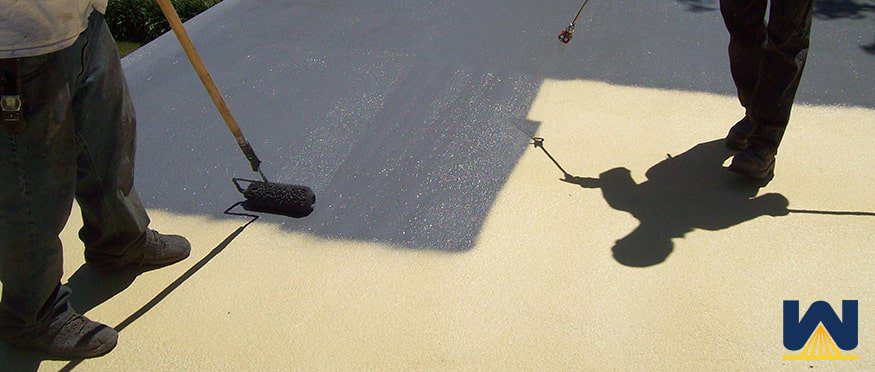Everything and everyone has a weakness.
Superman has kryptonite.
Computers get viruses.
Shaq couldn’t shoot free throws.
And…
Spray polyurethane foam roofs have UV rays.
The greatest weakness to spray polyurethane foam is its inability to resist ultraviolet rays of the sun.
Within 72 hours, uncoated spray foam will begin to deteriorate.
Under direct sunlight, spray foam will degrade at a rate of 1/16th inch per year. To protect a spray foam roof from UV damage, various types of elastomeric membranes are installed.
Possible membranes are:
- Silicones
- Urethanes
- Acrylics
These coatings are spray or roller applied (depending on the amount of wind) over the spray polyurethane foam, forming a seamless protective membrane.
In addition to UV protection, these coatings are engineered to provide waterproofing, impact resistance and improved fire ratings.
Here is a video showing a spray foam roof from start to finish, but if you play the video, it’s fast-forwarded to show foam being sprayed down, and a base coat of silicone (grey-colored) sprayed over top:
Which of the three membranes is right for your spray foam roof?
Depending on what area of the country your building’s in, will determine what kind of coating you should use.
Southwest/Southern Midwest – Spray foam roofs in the Southwest and Southern Midwest areas generally use acrylic coating. This is because these areas are generally dry and won’t allow the coating to run off because of dew cycles during application.
Top Midwest/East – Spray foam roofs in the northern section of the Midwest or further along east will generally use silicone coating. Silicone isn’t as strong as acrylic (300 PSI Tensile vs more than 1500 PSI Tensile), but silicone will withstand the dew cycles and moist air of these areas during application.
Hodge-Podge – Areas in the middle of the previous two areas sometimes use urethane coating. Urethane is not commonly used, due to silicone and acrylics specializing in their climates.
How much coating is needed to protect the spray foam roof from UV rays?
The amount of coating that’s applied to a spray foam roof is generally between 20 and 30 mils (a mil is a thousandth of an inch – .001 inch.)
Depending on the warranty a building owner is seeking, more or less coating will need to be applied.
After normal wear and tear from the outside elements, the coating will begin to slightly wear down. After a 10, 15- or 20-year period, what began as 30 mils of coating, might be down to 8 or 9 mils.
When the coating gets that thin, your spray foam roof will still be protected from UV rays, but it’s time to get a recoat done to provide maximum protection.
How does the topcoat and granules help protect a spray polyurethane foam roof?
Most topcoats of silicone that’s placed over a spray foam roof has embedded granules mixed in. We saw the base coat being sprayed in the previous video, let’s look at the topcoat with embedded granules:
Granules provide the spray foam roof with an increased aesthetic value and surface durability.
Now that we’ve seen the greatest weakness of spray polyurethane foam, let’s quickly look at its advantages:
- High R-value
- Renewable (can be the last roof you ever have to install)
- Quickly installed
- Self-flashing
- Seamless
- Easy to maintain
- Proven since the 1960s
NOTE: we have an article written that covers each of spray polyurethane foam’s advantages in more detail.
Conclusion to spray polyurethane foam weaknesses
Hopefully today you learned that everything and everyone has a weakness. When comparing spray foam roofing to other types of roofing systems, you’ll see they all have pros and cons.
But the one fact that stands out is that spray foam roofs need protective coating because of its inability to resist UV rays.
The protective coatings that go over a spray foam roof are usually silicone or acrylic and are applied to provide the building owner with their desired warranty.
So now what?
If you’d like to learn more about spray foam roofs, please click the free download image below.


